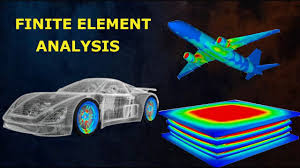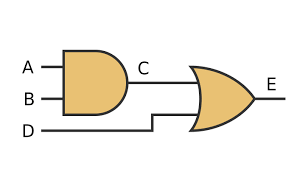Description
About the course
Professor Nachiketa Tiwari, a faculty from the Department of Mechanical Engineering at the Indian Institute of Technology, Kanpur has designed this fundamental course on ""Basics of Finite Element Analysis"" for you to learn Finite Element Analysis from an application standpoint. Currently, there are a lot of users of Finite Element Analysis having the limited understanding of the theoretical foundation of this powerful method. The consequence is that quite often they use commercial codes inaccurately, and do not realize that their results may be flawed. The course is intended to address this limitation by making you aware of the underlying mathematics in an easy to understand format.
This course will cover in detail the introduction and various concepts of Finite Element Analysis followed by Mathematical Concepts. It also covers 1-D BVP problems of 2nd order and applications which are Heat Transfer/Solid Mechanics. In addition to this, the course also covers Beams, Errors & Convergence, and Time-dependent problems. Finally, the course ends with Eigenvalue problems. This is completely an online course, and you can access it from anywhere in the world.
Learning Outcomes
After completing this course, you will be able to:
- Learn the basics of Finite Element Analysis from an application standpoint.
- Understand the numerical methods involved in Finite Element Theory.
- Understand the role and significance of shape functions in Finite Element Formulations.
- Use linear, quadratic, and cubic shape functions for interpolation.
- Understand direct and formal (basic energy and weighted residual) methods for deriving finite element equations, global, local and natural coordinates etc.
- Boost your hireability through innovative and independent learning.
Target Audience
The course can be taken by:
Students: All students who are pursuing professional graduate/post-graduate courses related to computer science and engineering or data science.
Teachers/Faculties: All computer science and engineering teachers/faculties.
Professionals: All working professionals from computer science / IT / Data Science domain.
Why Learn Basics of Finite Element Analysis?
The Finite Element Analysis (FEA) has been widely implemented by automotive companies and is used by design engineers as a tool during the product development process. Design engineers analyze their own designs while they are still in the form of easily modifiable CAD models to allow for quick turnaround times and to ensure prompt implementation of analysis results in the design process. While FEA software is readily available, successful use of FEA as a design tool still requires an understanding of FEA basics, familiarity with FEA process and commonly used modeling techniques, as well as an appreciation of inherent errors and their effect on the quality of results.
When used properly, the FEA becomes a tremendous productivity tool, helping design engineers reduce product development time and cost. Misapplication of FEA however, may lead to erroneous design decisions, which are very expensive to correct later in the design process. In addition to this, the career prospects are very bright, as there is a huge demand for the FEA professionals and Engineers across the world and it will continue to grow in the near future. So, it is very important to learn the Basics of Finite Element Analysis.
Course Features
- 24X7 Access: You can view lectures as per your own convenience.
- Online lectures: 20 hours of video lectures are available in the course, with high-quality videos which can be viewed online.
- Updated Quality content: The content has been designed and created by Professor Nachiketa Tiwari, who is a faculty from the Department of Mechanical Engineering at the Indian Institute of Technology, Kanpur. The course content is latest, easy to follow, and in accordance with the current industry demands.
Test & Evaluation
Each lecture will have a quiz which is nothing but a set of multiple choice questions. Apart from that, there will be a final test. The final test will also be based on multiple choice questions.
You will be evaluated on the basis of overall scores achieved in each lecture quiz and the scores achieved in the final test.
Certification
This course is free and it has no certificate.
Topics to be covered
- BFEA-Module-1: Introduction of Finite Element Analysis
- What is the concept of Finite Element Analysis (FEA)?
- What are the different comments on Finite Element Method?
- What is the complete process of FEA?
- BFEA-Module-2:Introduction of FEA,Nodes,Elements & Shape Functions
- What are the different examples of FEA?
- What are the different ways of reducing Error in FEA?
- BFEA-Module-3:Nodes,Elements & Shape Functions
- Where Governing equation can be used and what is the Governing Equation for Heat Conduction?
- How the temperature changes over the length of the element in Heat Conduction (part 1)?
- BFEA-Module-4: Polynomials as Shape Functions, Weighted Residuals, Elements & Assembly Level Equations
- How the temperature changes over the length of the element in Heat Conduction (part 2)?
- How to form the Assembly level equation for finding the unknown variable in Heat conduction?
- What are the boundary conditions for Heat equation?
- BFEA-Module-5: Types of Errors in FEA, Overall FEA Process & Convergence
- What are the sources of Errors in FEA and what are the features of FEA?
- What is Error parameter, Accuracy and what is Convergence and it's example?
- BFEA-Module-6: Strengths of FE Method, Continuity conditions at Interfaces
- What are the different advantages of FEA?
- What is the advantage of FEA in the assembly process?
- What is the advantage of FEA in a time-related problem?
- BFEA-Module-7: Key concept and terminologies
- What are the key concepts and terminologies used in FEA?
- What is the function of Class M?
- What is Boundary Value and what are the initial problems?
- What is the EigenValue problem?
- BFEA-Module-8: Weighed integral statements
- What is Boundary Value (BV) problem?
- How to use Weighted Integral residue in BV problem?
- BFEA-Module-9: Integration by parts-Review
- What is the concept of Integration by parts?
- Why integration by parts take two times to balance differentiability?
- BFEA-Module-10: Gradient and Divergence Theorems-Part I
- What are the Gradient theorems?
- What is the Divergence theorem?
- BFEA-Module-11: Gradient and Divergence Theorems-Part II
- How to use Gradient theorem?
- How to use Divergence theorem?
- BFEA-Module-12:Functionals
- What is a Functional and it's example?
- What is the general and mathematical definition of Functional?
- What is a Linear and Bilinear Functional and it's example?
- What is Symmetric Bilinear Functional and it's example?
- BFEA-Module-13: Variational Operator
- What is a Variation?
- What are the different examples of Variations?
- BFEA-Module-14: Weighted Integral & Weak Formulation
- How to develop a Weak Formulation & Weighted integral (Part-1)?
- How to develop a Weak Formulation & Weighted integral (Part-2)?
- BFEA-Module-15: Weak Formulation
- What are the different comments on weak formulation?
- How to make the choice of Weight function?
- Why do we make choices to select Weight function?
- BFEA-Module-16: Weak Formulation & Weighted Integral: Principal of minimum potential energy
- What are Linear-Bilinear & Quadratic functionals and what is the principle of minimum potential energy?
- BFEA-Module-17: Variational Methods: Rayleigh-Ritz Method
- What is the Rayleigh-Ritz Method?
- What is the example of Rayleigh-Ritz Formulation?
- BFEA-Module-18: Rayleigh-Ritz Method
- How to convert differential equation in terms of Rayleigh-Ritz Formulation (Part-1)
- How to convert differential equation in terms of Rayleigh-Ritz Formulation (Part-2)
- BFEA-Module-19: Method of Weighted Residuals
- What is Weighted Residuals method and its advantages over the Rayleigh-Ritz Method?
- How to develop an expression for Weighted Residual Method?
- BFEA-Module-20: Different types of Weighted Residual Methods - Part I
- What is Petrov Galerkin method?
- What are the Least Square and Collocation methods?
- BFEA-Module-21: Different types of Weighted Residual Methods - Part II
- How to develop Residue expression of given problem?
- How to make different choices of weight function using different Weighted Residuals methods for developing Residue expression?
- BFEA-Module-22: FEA formulation for 2nd order BVP - Part I
- What is the second order boundary problem and it's example (Part-1)?
- What is the second order boundary problem and it's example (Part-2)?
- BFEA-Module-23: FEA formulation for 2nd order BVP - Part II
- What are Global and Local coordinate systems?
- What are Interpolation functions and Lagrange family Interpolation functions?
- What is Hermite (Hermitic) Family of Interpolation functions?
- What are the properties of Interpolation functions?
- BFEA-Module-24:Element Level Equations
- How to develop Element level equations (Part-1)?
- How to develop Element level equations (Part-2)?
- BFEA-Module-25:2nd Order Boundary Value Problem
- How to construct the weak form at element level by considering the second-order boundary value problem?
- How to conduct the integration using a Local Coordinate system and develop element level equation?
- How to develop Element level equation for Quadratic element and make conclusions for other types of problems?
- BFEA-Module-26: Assembly of element equations
- How to assemble all element level equations and bring them up to Assembly level (Part-1)?
- How to assemble all element level equations and bring them up to Assembly level (Part-2)?
- BFEA-Module-27: Assembly of element equations, and implementation of boundary conditions
- What is the boundary condition in assembly level equations?
- How to assemble element equations in a methodical logic programmable way?
- BFEA-Module-28: Assembly process and the connectivity matrix
- What is the connectivity Matrix and it's example?
- What are the important observations in the context of the Finite Element Method?
- BFEA-Module-29: Radially Symmetric Problems
- What are Radially symmetric problems and how these problems are formulated?
- BFEA-Module-30: One-dimensional heat transfer
- What is the equation for 1D heat conduction in Cartesian and Cylinder Frame?
- What is the equation for 1D heat conduction in Spherical and Rectangular Frame(Accounting for convection)?
- What is the equation for 1D heat conduction in Rectangular Frame ( Steady state Equation)?
- BFEA-Module-31:1D-Heat conduction with convective effects: examples
- How to illustrate 1D-Heat conduction with convective effects (Part-1)?
- How to illustrate 1D-Heat conduction with convective effects (Part-2)?
- BFEA-Module-32: Euler-Bernoulli beam
- What is Euler-Bernoulli beam?
- What is the weak form of Euler-Bernoulli beam?
- BFEA-Module-33: Interpolation functions for Euler-Bernoulli beam
- How to develop Interpolation functions for Euler-Bernoulli beam (Part-1)?
- How to develop Interpolation functions for Euler-Bernoulli beam (Part-2)?
- BFEA-Module-34: Finite element equations for Euler-Bernoulli beam
- How to develop Finite Element Model for Euler-Bernoulli beam?
- What is Assembly Process?
- BFEA-Module-35: Assembly equations for Euler-Bernoulli beam
- How to develop Assemble Stiffness matrix for Euler-Bernoulli beam?
- What is the boundary condition in Euler-Bernoulli beam?
- BFEA-Module-36: Boundary conditions for Euler-Bernoulli beam
- What are the different Boundary conditions for Euler-Bernoulli beam?
- BFEA-Module-37: Shear deformable beams
- What is Shear Deformable beam?
- What is the Weak formulation of Shear Deformable beam?
- BFEA-Module-38: Finite element formulation for shear deformable beams: Part - I
- What are the Essential and Natural boundary conditions for Shear deformable beam?
- What are the interpolation functions for Shear deformable beam?
- What are the interpolation functions for thin Shear deformable beam and Shear locking problem?
- BFEA-Module-39: Finite element formulation for shear deformable beams: Part - II
- What are the different methods to avoid Shear Locking?
- BFEA-Module-40: Equal interpolation but reduced integration element
- How to rewrite weak form and interpolation functions of Shear Deformable Beam?
- How to reduce integration on weak form and stiffness Matrix of Shear Deformable Beam?
- BFEA-Module-41:Eigenvalue problems
- What is Eigen, Eigen value and it's general statement?
- How Eigenvalue depend on internal of the system?
- BFEA-Module-42: Eigenvalue problems: examples
- How to find Eigenvalue and Eigen Vectors Using FEA with an example (Part-1)?
- How to find Eigenvalue and Eigen Vectors Using FEA with an example (Part-2)?
- How to find Eigenvalue and Eigen Vectors Using FEA with an example (Part-3)?
- How to find Eigenvalue and Eigen Vectors Using FEA with an example (Part-4)?
- BFEA-Module-43: Introduction to time-dependent problems
- What is the Time-dependent problem and what are the different cases for time-dependent problems?
- What are the various steps to solve time-dependent problems?
- BFEA-Module-44: Spatial approximation
- What is the concept of Spatial Approximation (Part-1)?
- What is the concept of Spatial Approximation (Part-2)
- What is the concept of Spatial Approximation (Part-3)
- BFEA-Module-45: Temporal approximation for parabolic problems: Part-I
- What is Temporal Approximation and what is Alpha family of Approximation?
- What is the concept of Stability and Accuracy?
- BFEA-Module-46: Temporal approximation for parabolic problems: Part-II
- What is the Temporal Approximation of Parabolic Equation (Part-1)?
- What is the Temporal Approximation of Parabolic Equation (Part-2)?
- BFEA-Module-47: Temporal approximation for hyperbolic problems
- What is the Temporal approximation for hyperbolic Equations (Part-1)?
- What is the Temporal approximation for hyperbolic Equations (Part-2)?
- BFEA-Module-48: Explicit and implicit method, diagonalization of mass matrix, closure
- What are Explicit and Implicit Methods?
- How to Diagonalize the Mass Matrix?
- Basics of Finite Element Analysis - Final Quiz
Note : Parts of this material has been sourced from NPTEL, adapted and modified to adhere to our Pedagogical requirements and uploaded to YouTube for reuse under the same license.





Reviews
There are no reviews yet.